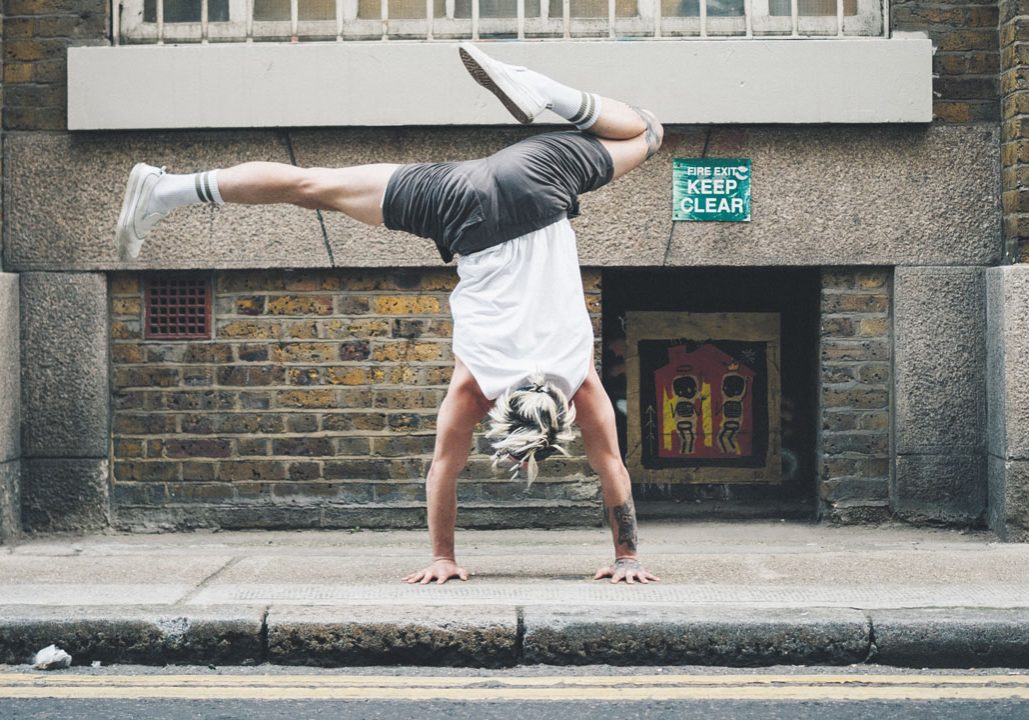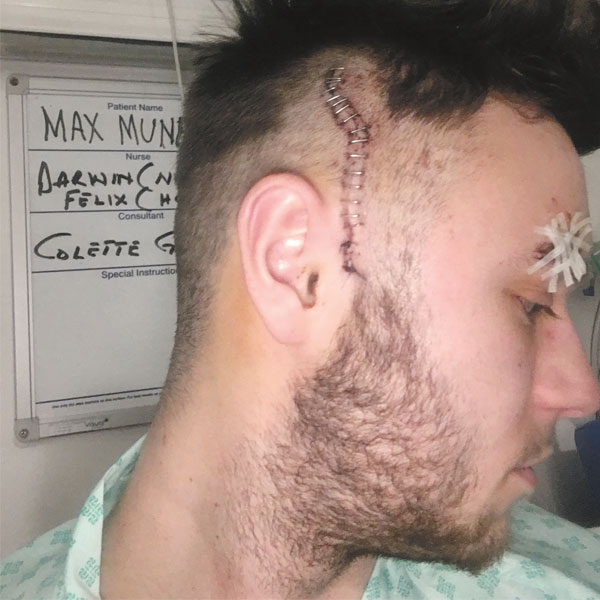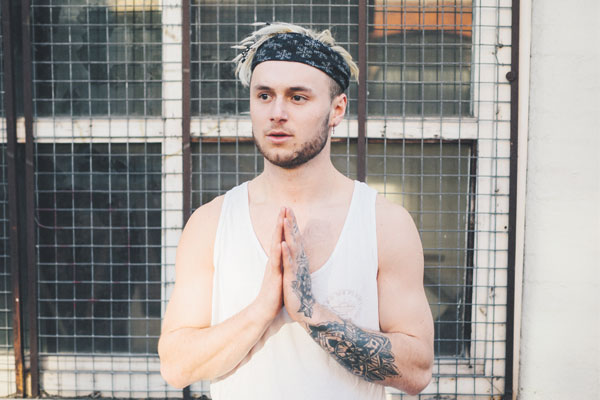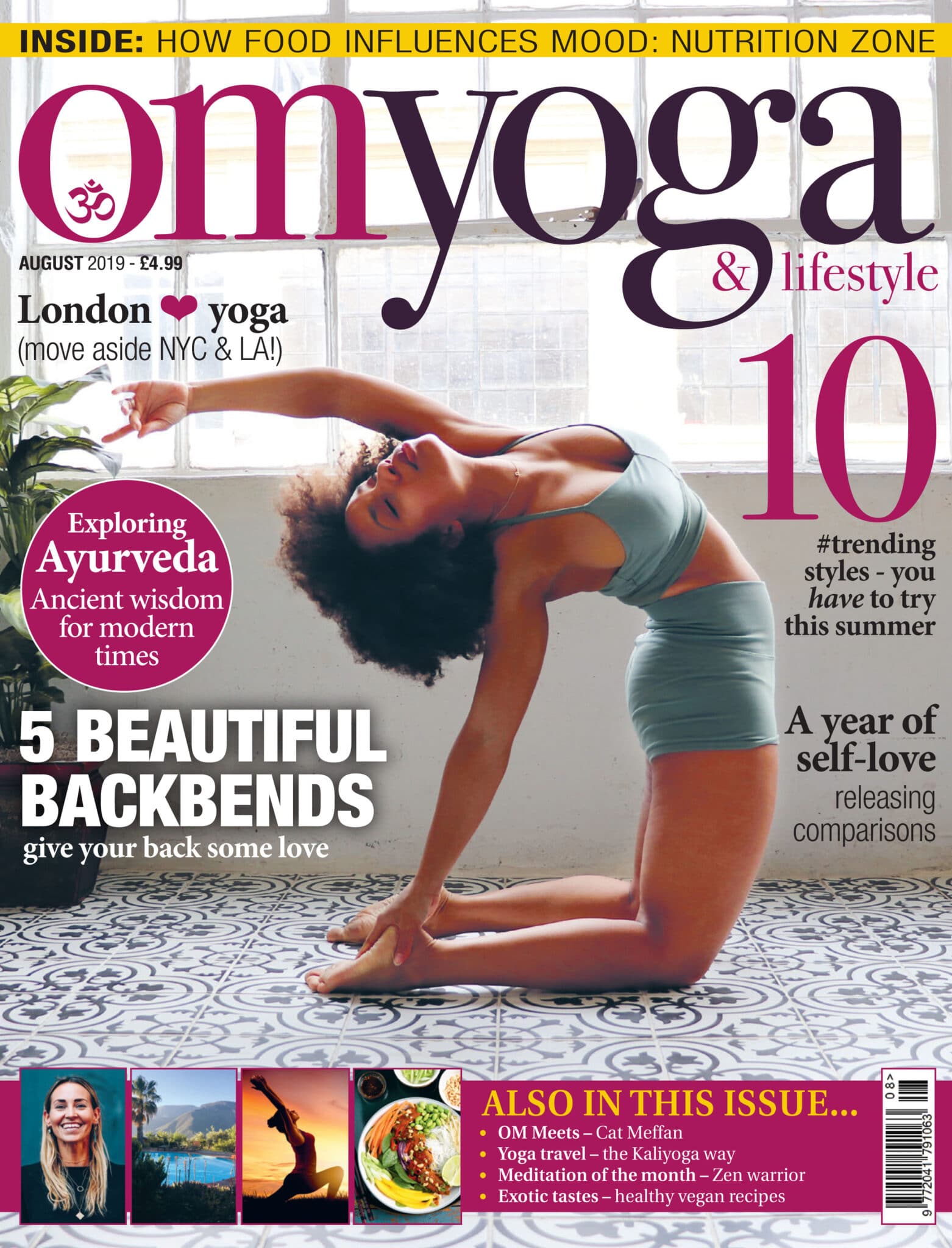
The road to recovery
Yoga and traumatic brain injury: how youthful yoga teacher Max Munro put his life back together afer a life-threatening fall
Max Munro is a 22-year-old yoga teacher. He’s certified in Power Yoga, Budokon, Broga, Tapasya Hot Yoga, arm balances and inversions and animal locomotion. He’s also a REPs 3 personal trainer. Munro’s yoga journey first began in 2012, when aged just 16. A year later he’d achieved his first teaching certification at the ripe old age of 17 and two months. At that time, he was the youngest certified Budokon teacher in the world. On his return to the UK from the USA, after his training, he was even featured in OM magazine.
After arriving back in his native UK, he commenced teaching, leading classes from 2013, and then moving to London in 2017. In the capital, he was teaching a dozen or so classes each week; the aim was to gradually increase that number, in order to further establish his career an instructor. But then things changed. His hopes and plans changed dramatically on February 11, 2018 when he had a life-changing injury. Munro fell from a balcony, landing on his head and receiving a Traumatic Brain Injury (TBI). “My injury was in the top 20% of the most serious and required a life-saving operation,” he tells OM. “I had a bleed on the brain at the point of impact, which required 16 staples down the right side of my head after surgery.”
He had a second bleed on the opposite side of his head to the impact site and severance between the two brain halves. Additionally, he suffered a fractured eye socket, other minor facial fractures, a displaced C7 & C2 vertebra and ligament and tendon damage to his right hand.
He was unconscious for 11 hours and suffered post-operative amnesia for 12 days after the injury. That’s the background to this story. Munro has now entered into a period of recovery with yoga now playing a critical role in that process.

Recovery process
Firstly, after a few days of physiotherapy and a wobbly start to proceedings, Munro says his arm balance and inversions training kicked in, which had been at a high level prior to the accident. “I was soon standing on a balance ball on one leg while having balls thrown at me, with the balls getting smaller and smaller…I only dropped one ball at my first attempt at this exercise!”
But despite this promising start, there was more to come. “I knew however that things were not as they once were, and I would require endless patience in order to make as full a recovery as possible. My consultant said this could take up to two years to achieve.
During my seven weeks in hospital I was over-loaded with information about things I could no longer do: no alcohol for a year; no extreme sports; no Parkour (free running); no contact sports (I loved martial arts); no getting over-tired (very dangerous after brain injury due to the susceptibility to seizures); no driving for a year.
In addition, Munro also faces memory issues, which might remain with him indefinitely due to the severity of the injury .However, he has not felt depressed or suffered with mood swings, which are all common symptoms after brain injury .“ I am just grateful to be alive,” he admits. “ I can speak normally, I have no impairment with muscle movement and the outcome could have been very different . I saw many other patients trying to recover in my ward, and they were struggling with their recovery mentally and physically which I found hugely upsetting, as they were mostly youngsters of a similar age to me.”
Yoga impact
As a dedicated student of all things yoga it made Munro wonder whether this was a factor in his recovery process. “Did yoga save my life? Well, it certainly helped in several ways. Firstly, my consultants have described my recovery as remarkable, especially after sustaining such a traumatic injury; they are surprised at the speed at which I have recovered. This may, in part, be due to my high level of fitness and young age.” However, according to his consultant and clinical psychologist, that part of his brain that deals with speech, logic and memory – and damaged in the accident - has been aided by another part of his brain, which doctors believe is compensating for the injuries. “Also, they believe that the combined mind-body attributes of a sustained yoga practice are playing a significant role in my recovery,” he adds.
“As I move on with my life and my yoga journey I feel humbled and thankful and perhaps a better version of my former self. Since leaving hospital I have attended several yoga classes and taught part of a class just two weeks after my discharge. And just 10 weeks after my injury, I taught my first full class and felt exhilarated. I have been given a second chance with my life and will tread a more thoughtful path in the future and hope to persuade young people and guys, in particular, that yoga can transform lives in so many ways - it may even help save your life!”
Munro is full of gratitude for all of the people that played a part in restoring him back to health: from the surgeon who saved his life, to the paramedics, consultants, doctors, therapists, nurses, cooks, cleaners, porters, family, friends and well-wishers along the way. “Many of them were unknown to me but they have helped me so caringly since my life-changing injury. I also pray that those other young people in hospital with me, with similar injuries but very different outcomes, recover as fully as possible in time.”
Find out more about Max Munro at: whitemountainyoga.co.uk





